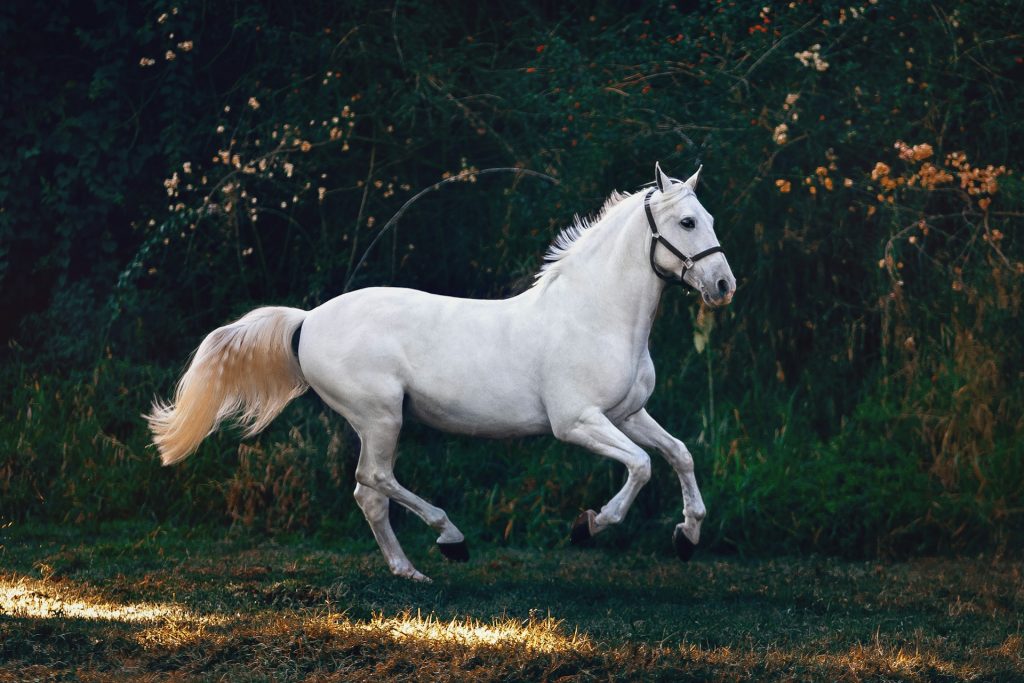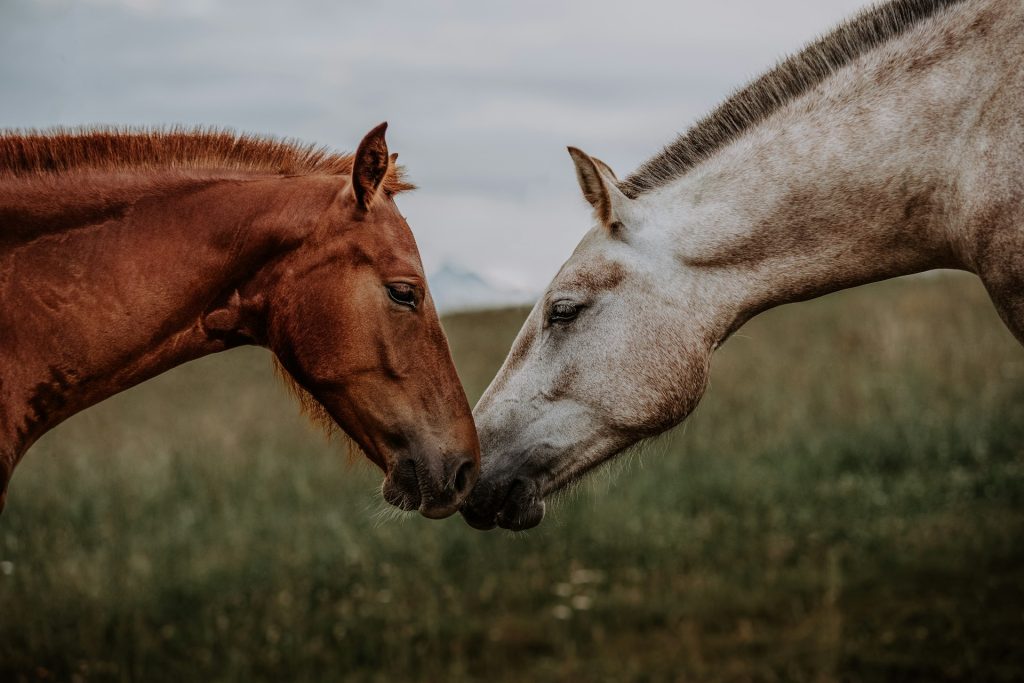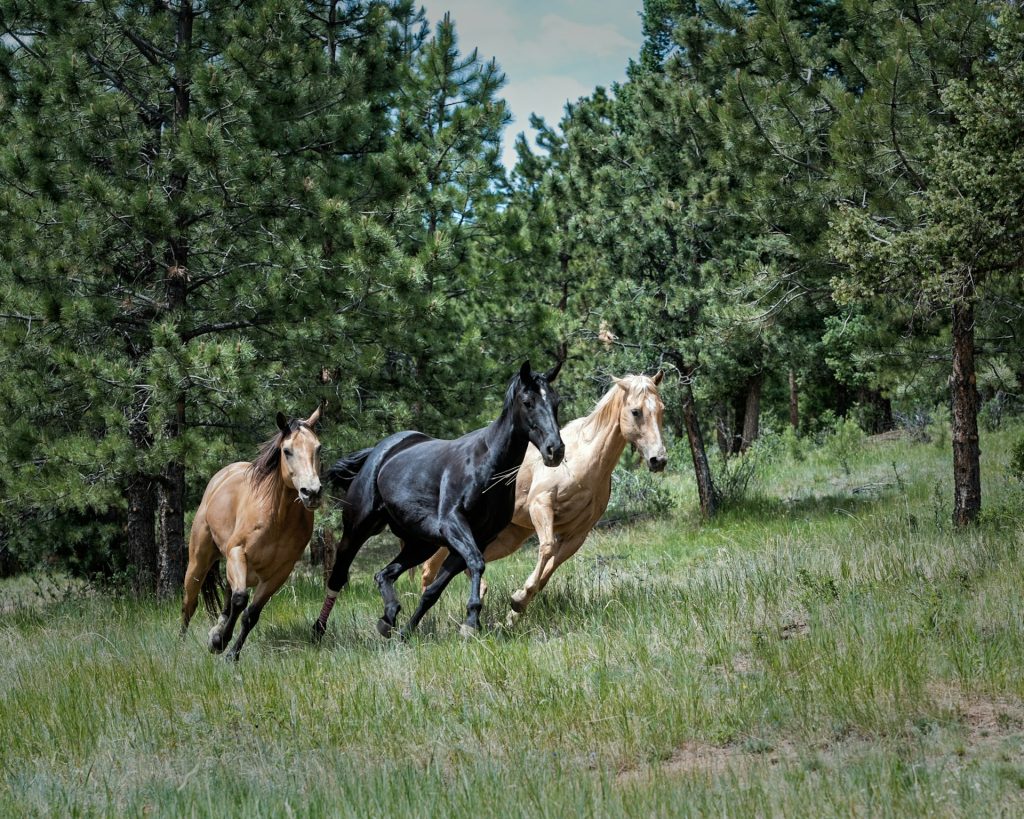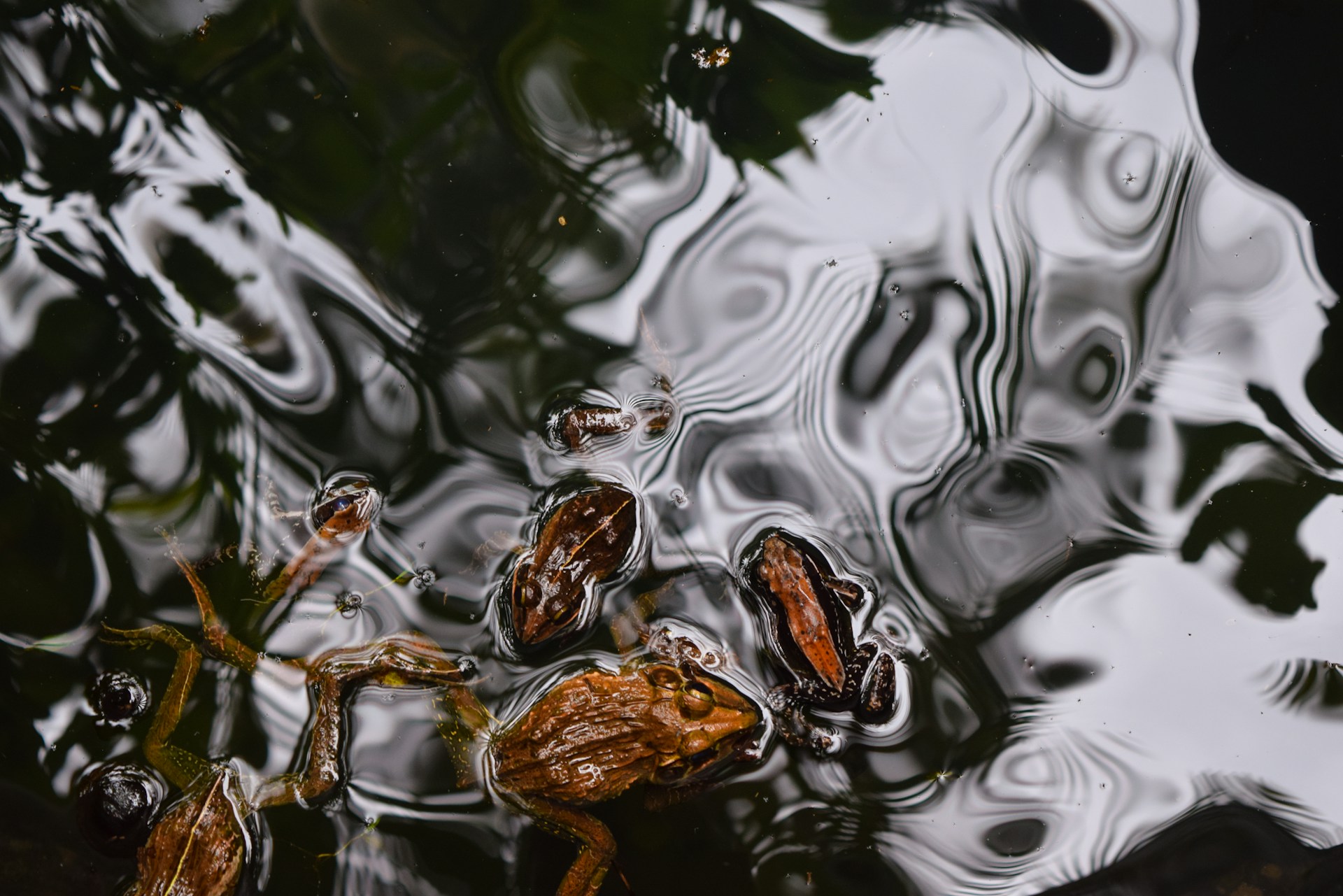Anyone who has interacted with a horse knows they are magnificent animals. Horses have been a part of our lives for thousands of years as companions, working animals, and athletes in equestrian sport, to name a few. Although horses are such well-known animals, the following facts may surprise you!

1. Horses Can’t Breathe Through Their Mouth
Horses are obligate nasal breathers. This means that they are unable to breathe through their mouths as humans can. Horses can only breathe through their noses. This adaptation helps them maintain efficient respiration while galloping, as their mouth is reserved exclusively for eating.
2. Horses Can Sleep Standing Up
Horses have a “stay apparatus,” a system of tendons and ligaments that allows the horse to lock their legs in position so they can relax without falling over. When not sleeping, horses also use this apparatus to rest while standing for long periods. This allows them to conserve energy while standing so they are ready to take flight if needed. It is a myth that horses never lie down – they do spend a short amount of time each day lying down for deeper sleep. On average, horses sleep two and a half hours per day.
3. Horses Have Excellent Hearing
As prey animals, horses need to have sensitive hearing to survive. Humans have only three muscles to control their ears, whereas horses have 10! This allows horses to rotate their ears nearly 180 degrees and move them independently of one another. Being able to rotate their ears lets horses hear sounds all around them without having to turn their heads.
4. Horses Have a Nearly 360-Degree Field of Vision
This is due to the positioning of their eyes on the sides of their heads. However, they have two blind spots – one directly behind them, and the other directly in front of their heads. This means that they cannot see the grass they are grazing on or the carrot you are sticking out to them! Instead, they will move their heads or use their mobile and sensitive lips, whiskers, and sense of smell to know what is in front of them.

5. Horses Have Lightning-Fast Reflexes
As prey animals, horses need to react quickly should a flight-or-fight situation arise. When they need to fight, horses can go from standing still to delivering a powerful kick in just 0.3 seconds, whereas human reaction time is 1.6 seconds. This rapid response is crucial for their survival in the wild.
6. Foals Can Walk and Run Within a Few Hours After Birth
Foals are relatively mature and mobile from birth. They are most vulnerable to predators immediately after birth, so they must be able to flee from danger if necessary. This early mobility ensures they can keep up with the herd and stay safe.
7. Horses Are Highly Intelligent Animals
Horses can be taught many different tasks through positive reinforcement and clicker training, just like dogs. One study showed that horses have the ability to communicate their needs to their guardians; these horses learned to communicate whether they wanted a blanket on or off by touching symbols on a board. Their intelligence and ability to learn complex tasks make them excellent partners in various activities, from sports to therapy.
8. There Are Many Colors and Patterns of Horses
Horses can be spotted, have patches of color, or be one main color with different colors on their faces or legs. Each of these horse colors has a unique name. Like dogs, the breed of the horse will influence their color. Some common colors include bay, chestnut, black, and gray, while patterns can include pinto, appaloosa, and roan.
9. The Earliest Ancestor of the Horse Lived 55 Million Years Ago
This ancestor was only the size of a Labrador retriever! Horses were domesticated around 6,000 years ago, as estimated from evidence found at archaeological sites. The journey from their small, forest-dwelling ancestors to the majestic creatures we know today is a fascinating tale of evolution and adaptation.
10. Horses Are Very Social Animals
Horses find safety in a herd and form strong social relationships with each other. They use their senses to recognize familiar horses and spend time with those they have formed friendships with. In the herd, one horse will stand guard to keep watch while the other horses in the herd take time to eat, rest, and sleep. This social structure helps protect them from predators and fosters a sense of community and cooperation.

Horses are truly remarkable animals, full of surprises and fascinating traits. From their unique breathing system to their intricate social structures, horses have evolved to be highly adapted and intelligent creatures. Whether you’re an avid equestrian or simply an admirer from afar, understanding these fun facts about horses can deepen your appreciation for these noble animals. So, next time you see a horse, remember these incredible facts and share them with your friends – who knows, you might just inspire someone to fall in love with horses too!





